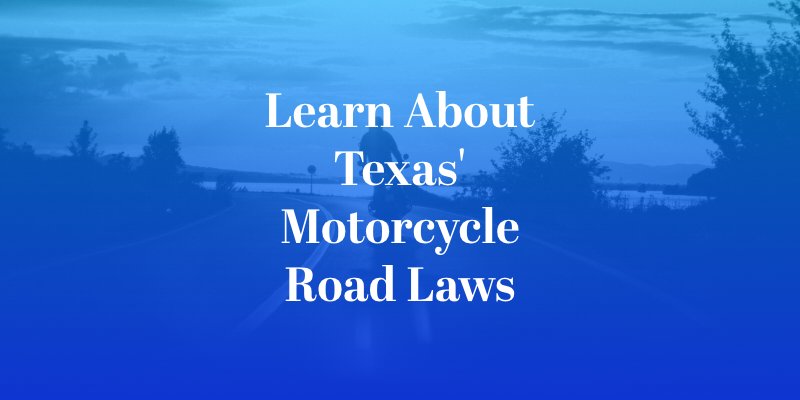Texas is home to thousands of avid motorcyclists, drawn to the state for its beautiful countryside and world-famous rides. Anyone who chooses to ride a motorcycle in Texas is responsible for knowing and obeying all of the state’s motorcycle laws. These laws are in place to improve motorcycle safety and help prevent tragic motorcycle accidents. If you were injured in an accident, make sure to speak with an experienced motorcycle accident lawyer in San Antonio.

Motorcycle License Requirement
All motorcyclists in Texas must have valid motorcycle licenses. Getting this type of license requires the completion of a motorcycle safety course and the possession of a REAL ID. Individuals can apply for these licenses at 15, but there are engine size restrictions in place (up to 250cc) until the individual turns 16.
Motorcycle Helmet Law
Department-of-Transportation-approved helmets are required by all motorcyclists under the age of 21, according to Chapter 661 of the Texas Transportation Code. If a motorcycle rider or passenger is over the age of 21, he or she can ride without a helmet only if:
- The individual has completed a motorcycle safety course, or
- Possesses at least $10,000 in medical insurance to cover accident-related injuries.
Even if the law does not require you to wear a motorcycle helmet, doing so is highly recommended by safety experts to help prevent serious injuries such as traumatic brain injuries in San Antonio.
Minimum Required Motorcycle Insurance
Like all motorists in Texas, motorcyclists are required to show proof of financial responsibility, typically in the form of automobile insurance. The minimum required types and amounts in Texas are currently:
- $30,000 for bodily injury or death to one person
- $60,000 for bodily injury or death to two or more people (per accident)
- $25,000 for property damage per accident
All of these types of insurance pay for the losses of others, not the motorcyclist, in the event of a traffic accident. Additional insurance is available to cover the motorcyclist if desired.
Texas Lane-Splitting Laws
The act of lane splitting is not permitted on Texas roadways. The law currently prohibits motorcyclists from riding on the line between two lanes of same-direction traffic. Specifically, Texas Transportation Code § 545.060 requires motorcyclists (along with other road users) to keep to a single lane as much as practicable.
Motorcycle Accident Laws
Texas uses an “at-fault” or “tort-based” car insurance rule. It is not a no-fault state. This type of insurance system, which is the most common in the country, allows injured crash victims to seek financial compensation from those at fault for their collisions. In a no-fault state, on the other hand, injured motorcyclists file claims with their own insurance providers, regardless of fault.
In Texas, if a motorcyclist is hurt because of a driver’s negligence, such as speeding or distracted driving, the motorcyclist can file a claim with the driver’s insurance company in pursuit of coverage. The at-fault driver can be held responsible for paying for the motorcyclist’s related medical bills, vehicle repairs, lost wages, and more.
Even if the motorcycle rider is given part of the blame for a crash in Texas, he or she can still recover financial compensation. The motorcyclist’s degree of fault must be below 51 percent to qualify. To discuss your financial recovery options after a motorcycle accident in Texas, contact the San Antonio personal injury attorneys at Hill Law Firm Accident & Injury Lawyers to arrange a free case review.
